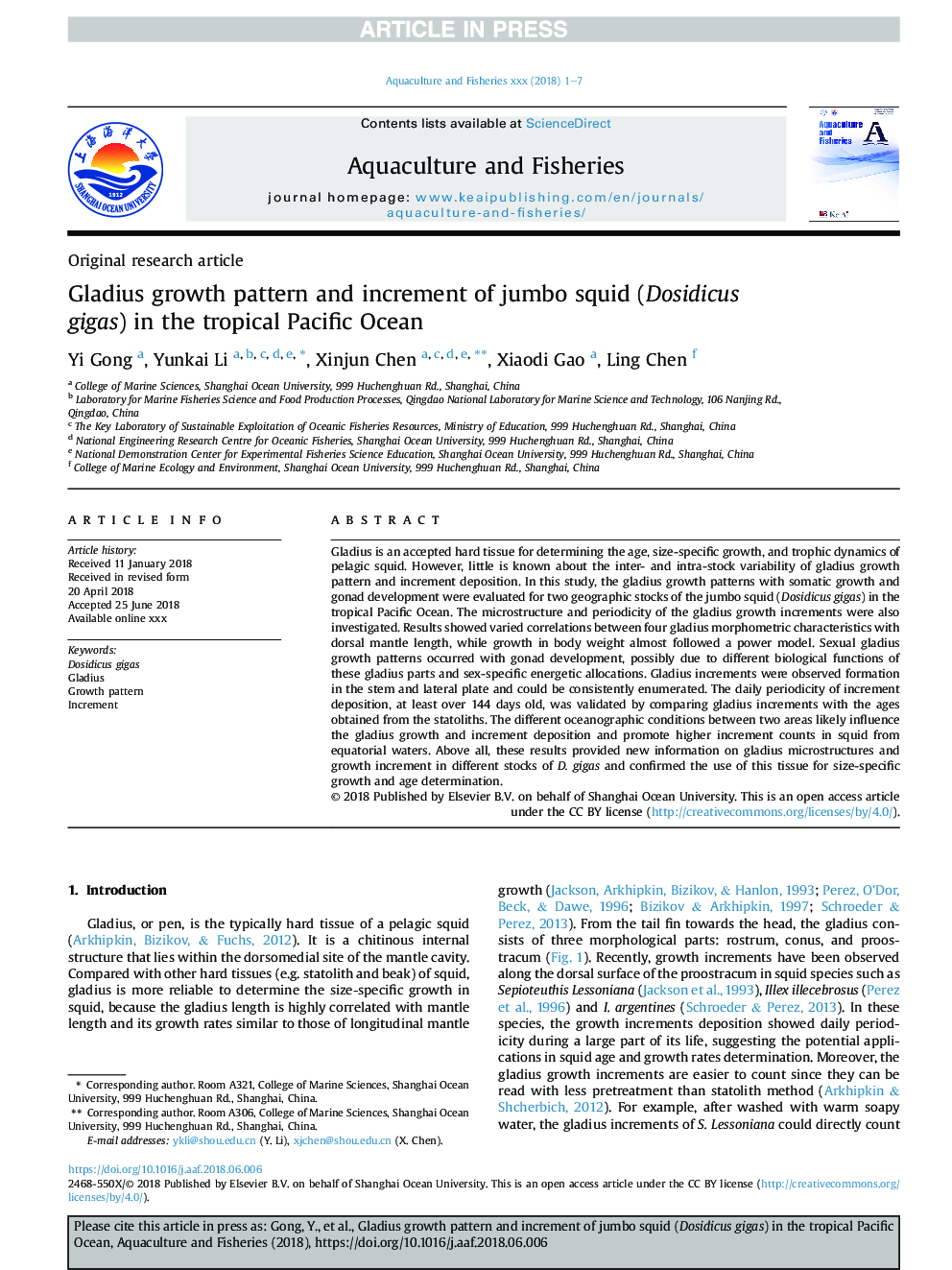| Article ID | Journal | Published Year | Pages | File Type |
|---|---|---|---|---|
| 8919972 | Aquaculture and Fisheries | 2018 | 7 Pages |
Abstract
Gladius is an accepted hard tissue for determining the age, size-specific growth, and trophic dynamics of pelagic squid. However, little is known about the inter- and intra-stock variability of gladius growth pattern and increment deposition. In this study, the gladius growth patterns with somatic growth and gonad development were evaluated for two geographic stocks of the jumbo squid (Dosidicus gigas) in the tropical Pacific Ocean. The microstructure and periodicity of the gladius growth increments were also investigated. Results showed varied correlations between four gladius morphometric characteristics with dorsal mantle length, while growth in body weight almost followed a power model. Sexual gladius growth patterns occurred with gonad development, possibly due to different biological functions of these gladius parts and sex-specific energetic allocations. Gladius increments were observed formation in the stem and lateral plate and could be consistently enumerated. The daily periodicity of increment deposition, at least over 144 days old, was validated by comparing gladius increments with the ages obtained from the statoliths. The different oceanographic conditions between two areas likely influence the gladius growth and increment deposition and promote higher increment counts in squid from equatorial waters. Above all, these results provided new information on gladius microstructures and growth increment in different stocks of D. gigas and confirmed the use of this tissue for size-specific growth and age determination.
Related Topics
Life Sciences
Agricultural and Biological Sciences
Aquatic Science
Authors
Yi Gong, Yunkai Li, Xinjun Chen, Xiaodi Gao, Ling Chen,
